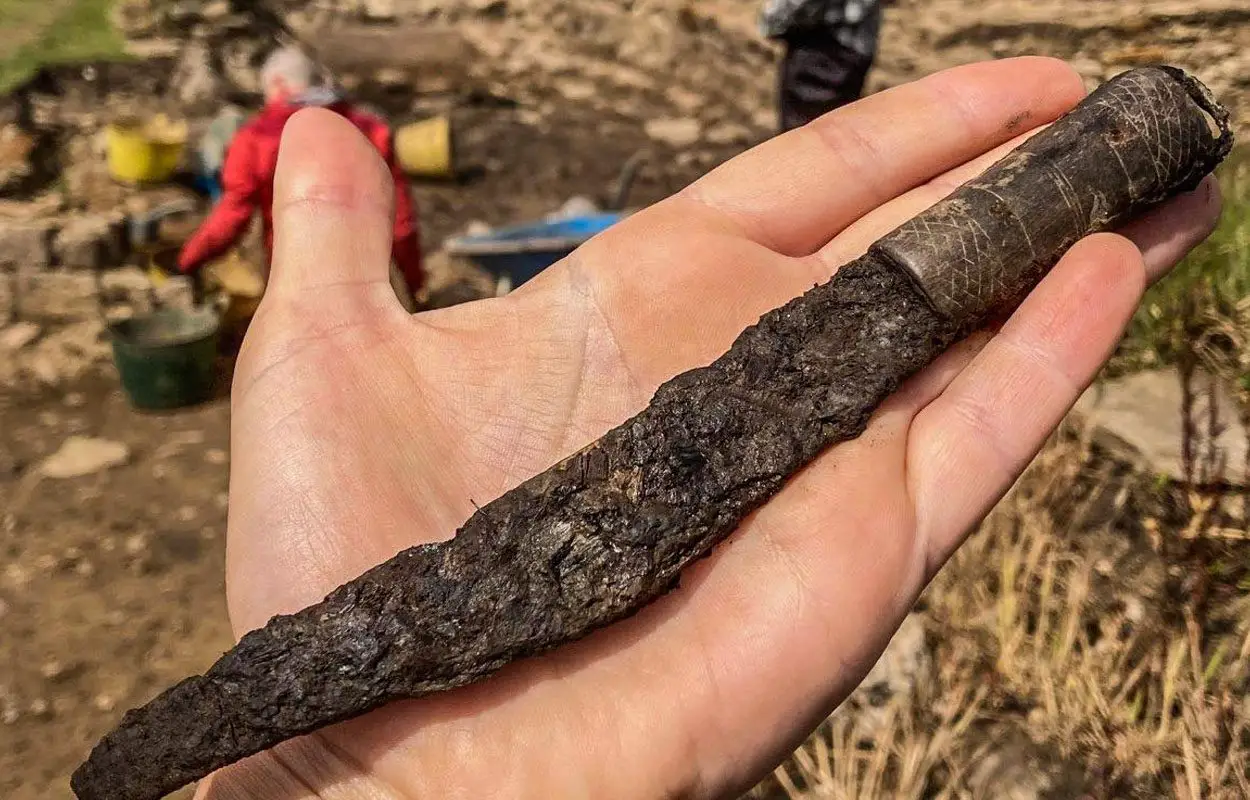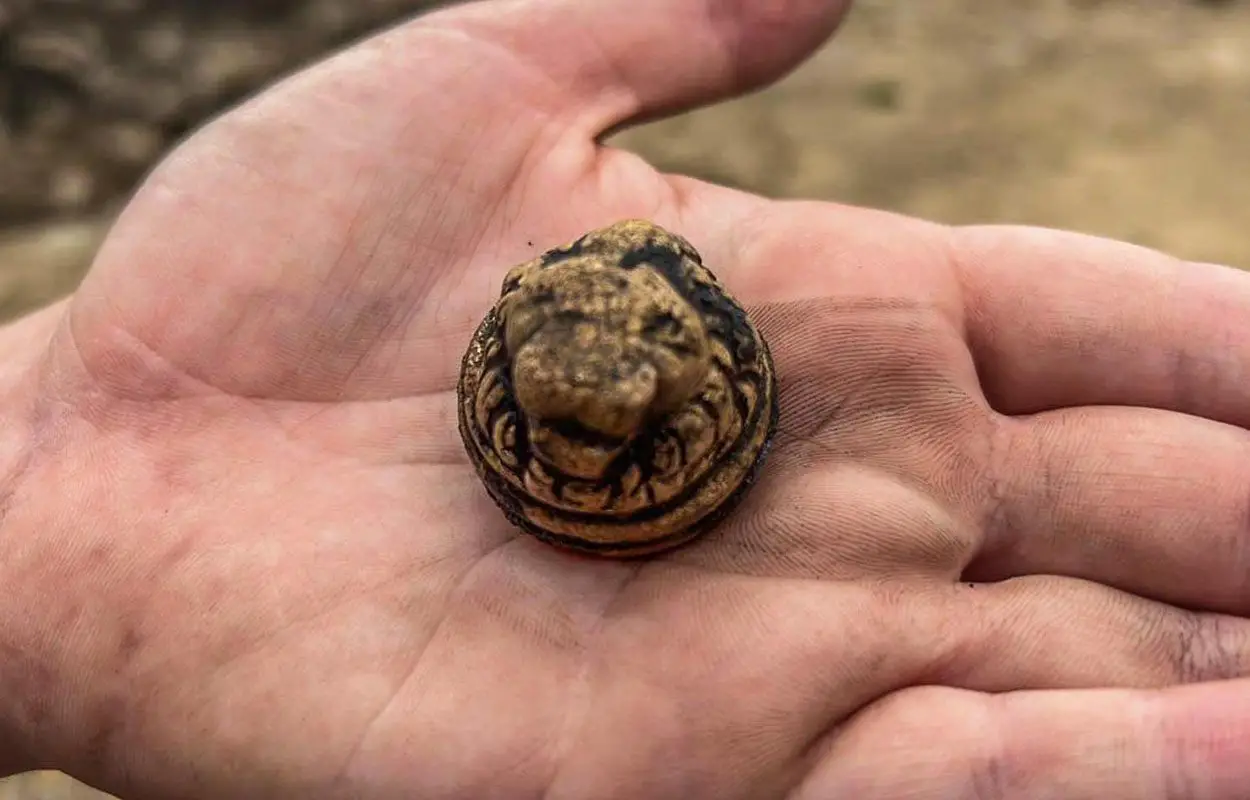Volunteer archaeologists excavating at Roman Vindolanda have uncovered evidence of the 9th cohort of Batavians.
Vindolanda (translated as “white field” or “white moor”) was a Roman auxiliary near Hadrian’s Wall that guarded a major highway called the Stanegate.
No less than nine forts were built of timber or stone at Vindolanda from between AD 85 to 370, creating one of the most complex archaeological sites in Britain and a unique cultural legacy of frontier life.
Today, Vindolanda is an ongoing active archaeological site, with previous excavations uncovering thousands of perfectly preserved shoes, textiles, wooden objects, and the Vindolanda tablets (the oldest surviving documents in Britain that date from the 1st and 2nd century AD).
Recent excavations have found a copper alloy lion head pommel that dates from AD 90 to 105 when the 9th cohort of Batavians were stationed at Vindolanda. The 9th cohort of Batavians were a mixed infantry-cavalry unit of about 1,000 men that came from a region close to the mouth of the Rhine near the modern day city of Nijmegen in the Netherlands.
Batavian soldiers were first brought to Britain during the conquest period in AD 43, and also fought at Ynys Mon in present-day Anglesey where they attacked the Druid stronghold in an amphibious assault.

Excavations at Vindolanda have also uncovered a bone handled knife that dates from around the same period as the Batavians, a sherd of a mortarium bow with indications that it was repaired using lead and copper alloy, a pit containing hundreds of nuts (mostly hazelnut) which dates from AD 105-108, and samian pottery depicting a hare.
This season has also seen the start of a groundbreaking five year project to excavate Roman Magna, a fort that predates Hadrian’s Wall which was constructed to guard the junction of the Maiden Way Roman road with the Stanegate.
Dr Andrew Birley, the Director of Excavations for the Vindolanda Charitable Trust said: “Magna has waited patiently for thousands of years to start to tell us its story and history and that time is now. The project is vital, as it comes at a time when the rapidly changing climate is having a devastating effect on the preservation of some of the most precious buried archaeological deposits. This threatens our future ability to explore and understand our past.”
Header Image Credit : Vindolanda Trust







